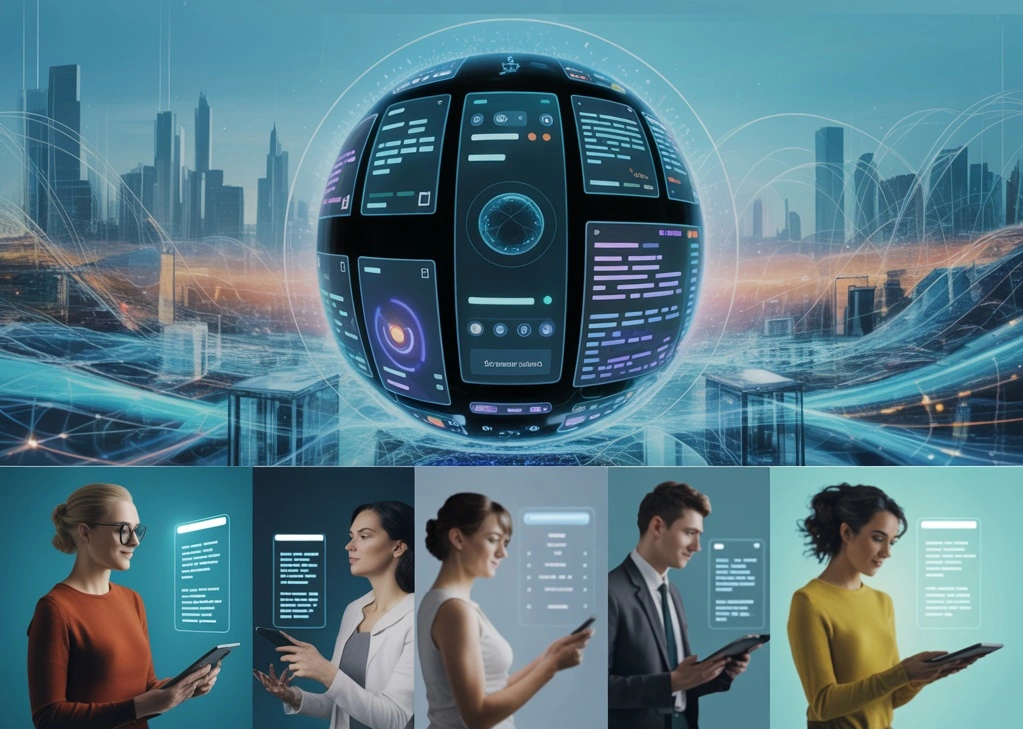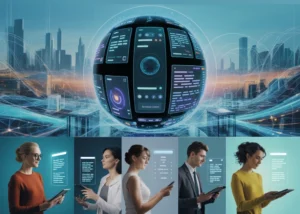By Gudstory Org AI News (May 22, 2025)
How AI Chatbots Are Transforming the U.S. in 2025
In 2025, AI chatbots have become more than simple automated tools—they are reshaping the way businesses, healthcare providers, and government institutions communicate with people. Innovations in generative AI and natural language processing (NLP) have enabled these bots to engage in conversations that feel remarkably human, offer continuous service around the clock, and help organizations cut costs significantly.
Understanding AI Chatbots
An AI chatbot is a digital program that mimics human dialogue using artificial intelligence. Unlike traditional bots that follow preset scripts, today’s AI chatbots employ machine learning and NLP to grasp user intent and deliver relevant answers in real-time. Industry leaders such as OpenAI’s ChatGPT, Google’s Gemini, and Claude by Anthropic are setting the standard for what these systems can do.
Top Advantages of AI Chatbots in 2025
-
Smarter Customer Service
American companies are increasingly turning to AI chatbots to deliver instant and efficient customer support. Sectors like retail, finance, and telecommunications have reported a 40% drop in support-related expenses, along with improved customer experiences. -
Around-the-Clock Functionality
AI chatbots provide uninterrupted service, allowing organizations to engage users across different time zones without missing a beat. -
Support in Healthcare
The U.S. healthcare system is deploying chatbots to handle tasks like booking appointments, triaging symptoms, and even providing mental health resources. This not only accelerates patient care but also eases the workload on medical staff. -
Boost in Online Sales
E-commerce platforms are using chatbots to suggest products, recover abandoned carts, and guide users through purchases—all of which contribute to higher conversion rates.
Current Trends Shaping AI Chatbots in America
-
Voice Integration: Chatbots are increasingly compatible with voice assistants such as Google Home and Amazon Alexa.
-
Language Diversity: They’re being designed to communicate in multiple languages to serve America’s multicultural population.
-
Emotional Awareness: New systems can detect tone and sentiment, enabling more thoughtful and appropriate responses.
-
Data Regulations: Upcoming U.S. laws are expected to govern how chatbot data is collected, stored, and used.
Ethical Considerations and Hurdles
Despite their promise, AI chatbots come with challenges:
-
Privacy Risks: These tools must comply with laws like HIPAA and GDPR to protect sensitive data.
-
Bias and Fairness: If not carefully trained, chatbots may reflect harmful societal biases.
-
Job Concerns: As automation grows, there are fears about the impact on entry-level support roles.
Leading AI Chatbot Platforms in 2025
| Platform | Key Features | Ideal Use Case |
|---|---|---|
| ChatGPT (OpenAI) | Conversational fluency, plugin support, enterprise-ready tools | Education, SaaS products |
| Google Gemini | Integrates deeply with Google’s ecosystem, supports voice and image inputs | Customer service, local businesses |
| Microsoft Copilot | Embedded in Microsoft Office tools | Corporate workflows |
| Drift | Sales-focused with lead qualification tools | B2B websites |
| Ada | Highly customizable for support automation | Online retail |
Conclusion: The AI Chatbot Era Is in Full Swing
Across industries, from healthcare to e-commerce, AI chatbots are now integral to how organizations function and engage with the public. As the technology advances, these bots are set to become even more intuitive, empathetic, and essential in daily American life.
Want more news on AI innovation in the U.S.? Subscribe to our newsletter for weekly updates on AI tools, tech policy, startup trends, and more.


